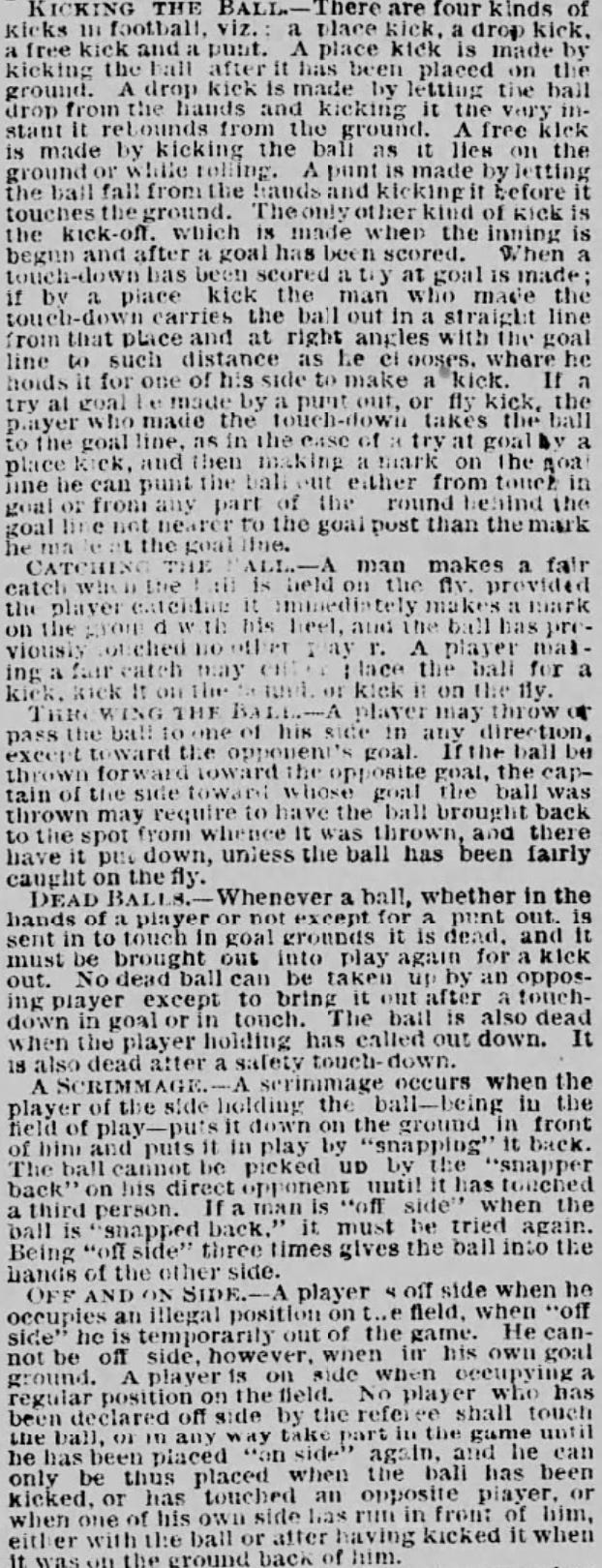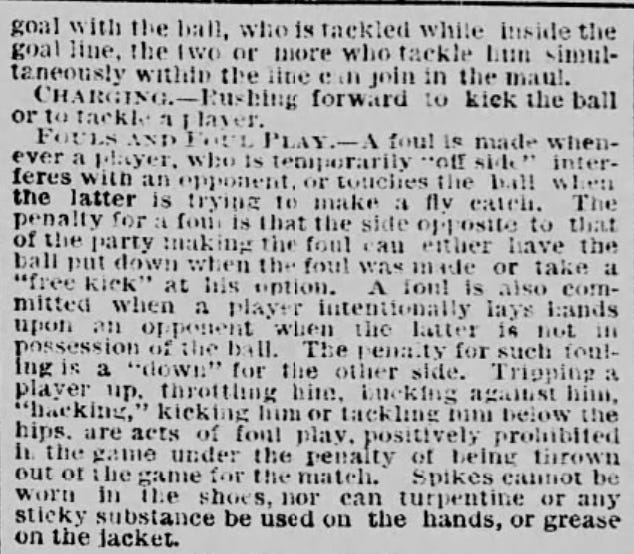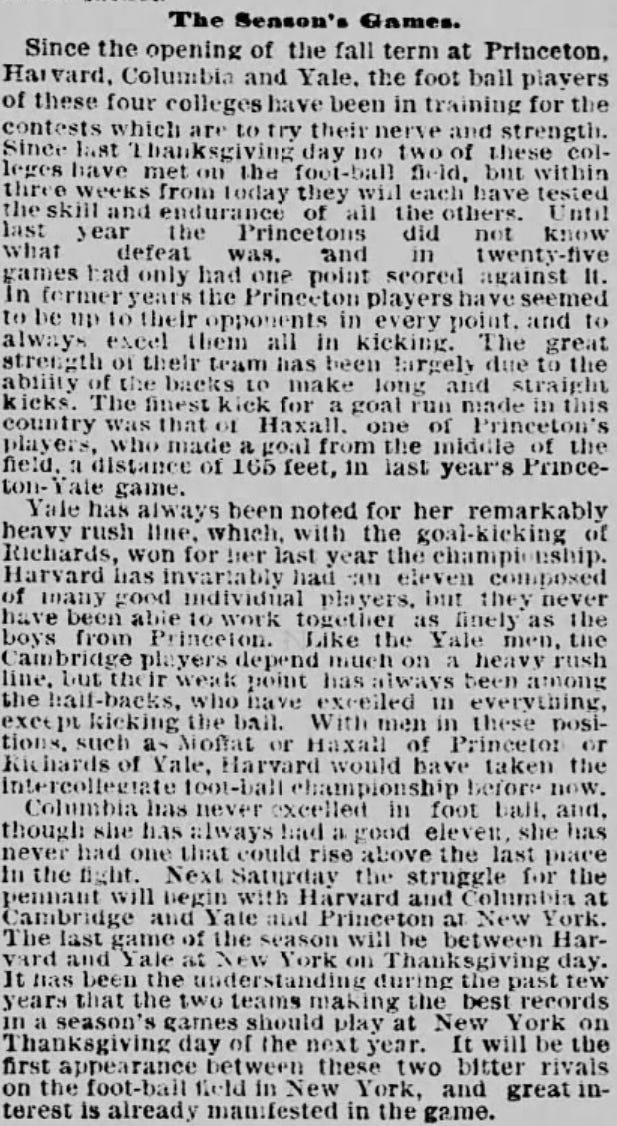1883 Introduction To Football
I love finding articles like this one. These offer great insight into what the sport was really like in those days, as well as helping us understand how it compared to other contemporary sports.
Since these articles are pretty hard to find, I’ve copied the entire article below:
Here’s a brief summary for those who don’t want to dig through the old newsprint:
The older game of football was mostly a kicking game, one that was probably closer to the Australian game than anything else.
The rugby influence brought along the oval ball and the ability to run with the ball.
The field was 110 yards long in those days, similar to Canadian football today.
Matches were 90 minutes long, divided into two 45 minute halves. This is important to understand when you’re trying to decipher articles about famous old games. Some articles refer to things like “the first three quarters,” which refers to 45 minutes.
There were 11 men per side in those days, which was less than the 15 in the rugby game.
Winning was defined as the side scoring the majority of touchdowns. In the case of ties, a goal after a touchdown (here “a goal from touchdown”) would be the tie breaker. Safeties would then be the final tiebreaker — and there are still references here to a safety equaling 1/4 of a point.
Field goals (or “goals”) were also a thing aside from the goal after touchdown. Of course, if winning is determined only by touchdowns (which is probably reported inaccurately here), it’s not clear why you’d ever want to kick a field goal.
This includes the first reference to the “punt out” from the end zone that I’ve seen. This was an old rugby play to allow the team that scored a touchdown far on the corner to have a chance at a fair catch at a better angle to the goal. We’ll talk about that rule later.
The old rugby rule of “marking” before a fair catch was still in practice in those days. You only see that play in the Australian game these days.
Snaps could not be touched by the snapper; he had to be adept at using his feet to knock the ball back to another player on his side.
Offside seems to have still been determined by the position of the ball. You were offside if you were ahead of the ball on either side. This also prohibited blocking, since you couldn’t legally get ahead of the ball carrier without being found offside.
There’s also a very complicated description of a “maul in goal” which doesn’t make much sense to me. Leave a comment if you can figure that one out.
Overall, the game in 1883 seems impossibly complicated — a slightly more civilized form of rugby with a lot of contradictory rules. This was indeed a game in flux.









